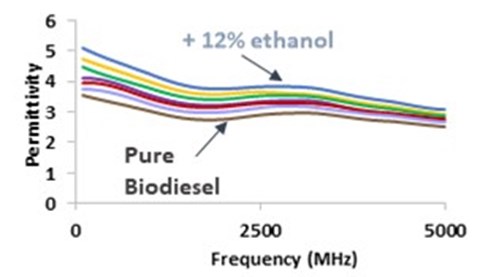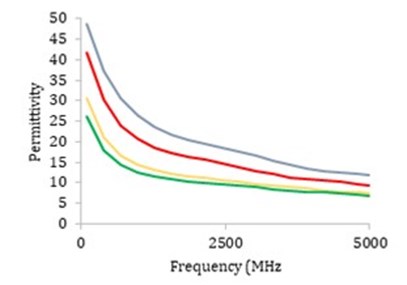Objective 4: Methods to determine impurities and method for online calorific value of liquid biofuels
To develop validated methods to determine the amount and nature of impurities in liquid biofuels, including quantifying and qualifying inorganic (i.e. Na, Ca, K, Mg, P) for a measurement range of 0.5 mg/kg to 2.5 mg/kg with a relative target uncertainty of 5 - 10 % (k=1) and organic by-products (i.e. total glycerol) < 5% relative repeatability for 0.1 - 0.3% range as per EN ISO 14105. In addition, to develop a traceable method for the online determination of the calorific value of liquid biofuels.
In bioliquids, the presence of inorganics (residual catalyst, salts) and organic by-products (glycerol, partly converted fat, soap) can lead to undesirable precipitations of solids in the fuel transportation system/inlet to the combustion chamber. Furthermore, the presence of inorganics and thus possible formation of corrosive gases can lead to the corrosion of the appliances. The amount of impurities, especially the inorganics, will also affect the caloric value and must be known to make an accurate determination of this.
In relation to quality control of the fuel, it is known that the remaining water after dehydration (or water taken up due to the hygroscopic nature of methyl esters), as well as remaining impurities after purification and filtering operations, have a negative impact on the energy performance after long-term storage of fatty acid methyl esters (FAME) and other biodiesels. Moisture can result in microbial growth and can lead to undesirable diesel bugs, moulds, yeasts, and bacteria spreading throughout the fuel. Storage of biofuels over extended periods of time induces degradation of their properties. In order to determine the calorific value, the impurities and water must then be measured simultaneously and accurately with validated methods with a fast, reproducible measuring technique. Accurate measurements of the calorific value of liquids biofuels are needed and the only reliable technique is bomb calorimetry which is generally adopted in metrology research and testing laboratories.
As a first step, PTB, BRML, DTI, IST, IMBiH, TUBITAK, CETIAT, VERDO, AMU, and PROMETEC made the "Report on required parameters and metrological methodologies for measuring calorific value of biofuels and qualifying impurities, moisture, and ash content”. The report was based on a survey among stakeholders and a literature review using peer-reviewed publications and documentary standards. This allowed to establish the metrological requirements for the certified reference material candidates and the impurity analysis.
In the BIOFMET project advanced traceable measurement standards for the determination of the calorific value and impurities were established. One liquid biofuel reference material was produced by TUBITAK in collaboration with other projects and collaborators: UME BIOFMET CRM 01, certified for calorific value, density, viscosity and mass fractions of Ca, K, Mg, Na, P, S elements. The material was produced in accordance with the requirements of ISO 17034 standard.
The raw material for the CRM is Biodiesel (B100 composed of 80% RME [rapeseed methyl ester] and 20% SME [soy methyl ester]) which was produced in Romania. The material was spiked with Ca, K, Mg, Na, and P standards in mineral oil. The homogeneity and stability of the material were assessed in accordance with ISO Guide 35. The material was characterized by interlaboratory comparison studies among BAM, BRML, DTI, IMBIH, GUM, LGC, PTB, and TUBITAK. Uncertainties of the certified values were calculated in accordance with ISO Guide 35 and GUM “Guide to the Expression of Uncertainty in Measurement” (JCGM100:2008) and include characterization, homogeneity, and stability components.
The material is intended for method development and validation in the determination of calorific value, density, viscosity and mass fractions of Ca, K, Mg, Na, P, and S elements and for quality control purposes. The CRM is available in glass bottles containing approximately 500 mL of material.
Subsequently, BRML first determined in laboratory using the chromatographic method, the mass concentration of total glycerol, free glycerol and residual mono-, di- and triglycerides contained by fatty acid methyl esters (FAME) resulting from the transesterification of vegetable oils. The principle of the method consists in the transformation of free glycerol and mono-, di- and triglycerides into much more volatile and stable derivatives in the presence of pyridine and N-methyl-N-trimethylsilylfluoroacetamide (MSTFA). After the silanization reaction, the sample is analysed by gas chromatography on a short column with a small deposition of the stationary phase, injecting it directly into the chromatographic column (on-column) and detecting the compounds with a flame ionization detector (F.I.D.). After a calibration procedure, the quantification of free glycerol is performed in the presence of the internal standard 1,2,4-butanetriol. Mono-, di- and triglycerides are directly quantified in the presence of internal standards for each category of glycerides:
- monononadecanoin (Mono C19) for monoglycerides
- dinonadecanoin (Di C38) for diglycerides
- trinonadecanoin (Tri C57) for triglycerides
All the parameters (selectivity, linearity, trueness, and accuracy) of the method for determining organic impurities were analysed and calculated.
The sources of uncertainty were established for both glycerides (Figure 16) and free glycerol (Figure 17). In Figure 16 the following parameters are included:
- AMono, ADi, Atri – the sum of the areas corresponding to the peaks of mono-, di- and triglycerides in the sample
- AMonoC19 – the peak area corresponding to the internal standard Mono C19
- MMonoC19 – the mass of the internal standard Mono C19, in mg;
- ADiC38 – the peak area corresponding to the internal standard Di C38;
- MDiC38 – the mass of the internal standard Di C38, in mg;
- ATriC57 – the peak area corresponding to the internal standard Tri C57;
- MTriC57 – the mass of the internal standard Tri C57, in mg;
- m – the mass of the biodiesel sample
The measurement uncertainty was calculated, and the uncertainties budget was established.
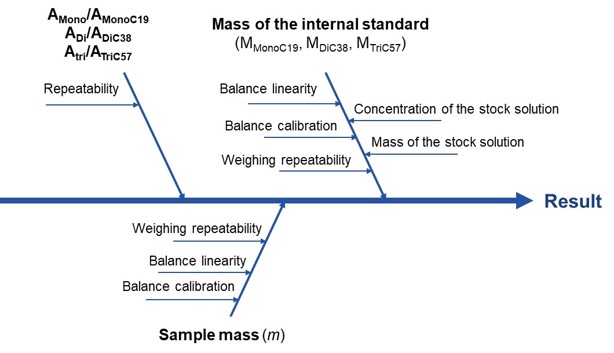
Figure 16. Sources of uncertainty in the determination of glycerides concentration in biodiesel.
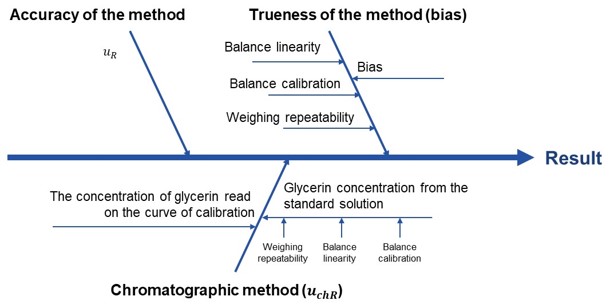
Figure 17. Sources of uncertainty in determining the mass concentration of free glycerol in biodiesel.
The accuracy component u_R, was estimated by means of the standard deviation of the repeatability of the differences between the experimentally determined values for the same sample.
The trueness of the method (u_bias) was determined from the experiments used to validate the accuracy of the method as a combination of the difference RMS_bias between the concentrations of the analyzed standard solutions and the concentrations determined experimentally and the uncertainty of the preparation of the standard solutions, Here RMS_bias is the difference between the glycerin concentration of the standard solutions and the glycerin concentration determined experimentally and the standard uncertainty of preparation of standard glycerin solutions.
Here RMS_bias is the difference between the glycerin concentration of the standard solutions and the glycerin concentration determined experimentally and the standard uncertainty of preparation of standard glycerin solutions.
TUBITAK collaborated with BRML on measuring the organic impurities and determined the methanol content according to standard ISO EN 14110. The results for organic impurities content from biodiesel are presented in Table 3.
Table 3. Organic Impurities – Biodiesel

The result of the analysis of the liquid biofuels has been reported in a joined publication by BRML, TUBITAK, IMBiH and DTI (“Development and validation improved metrological methods for the determination of inorganic impurities and ash content from biofuels” by Stratulat et al., Energies, doi.org/10.3390/en16135221). This work has provided essential input to the “Report on certification of liquid and solid biofuel reference materials“ and the “Good Practice Guidelines on uncertainty assessment of biofuel measurements“ that are available on BIOFMET website.
At AMU's Institut Fresnel laboratory, a prototype has been developed (Figure 18) for online measurement of impurities, such as ethanol in biodiesel (Figure 19), or water content in bioliquids (Figure 20). The first step in this study was to determine the dielectric contrast between biodiesel or bioliquids with and without impurities or water. The main application of this project is the online evaluation of the ethanol content of biofuels using the prototype. An article has been published about this application (PIER Letters, Vol. 106, 1-6, doi:10.2528/PIERL22021104) The second application naturally arose for the detection of water adulteration in honey using the same prototype. A second article has been published regarding this work (PIER Letters, Vol. 111, 1-7, doi:10.2528/PIERL23041205. These results will enable AMU Institute Fresnel to envisage a second prototype for non-destructive fraud detection without chemical analysis or sampling.
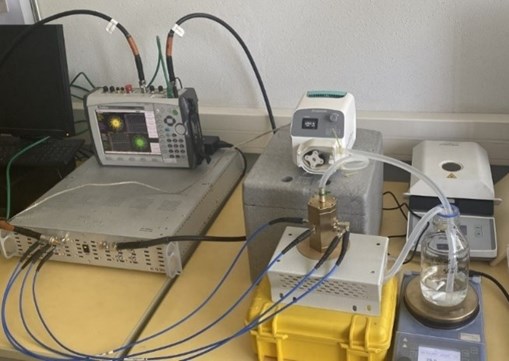
Figure 18. Test bench for biodiesel/ethanol mixtures.
|
Figure 19. Permittivity of Ethanol/Biodiesel mixture; from 0% to 12% ethanol (step 2%). |
Figure 20. The permittivity as a function of frequency for liquid biofuel mixed with 0% (green curve) – 15% water (blue). |

